Chasing Lightning at the Grand Canyon by Don Smith
It’s funny where inspiration can strike (pardon the pun). Fifteen years ago, while awaiting a doctor’s appointment, I picked up an issue of National Geographic and stumbled across an article about Northern Arizona’s summer monsoon season. I remember succinctly how engaged I was viewing the five-opening double-truck photo spreads of daytime lightning over the north rim of the Grand Canyon. It was the first time that I had seen published images of lightning captured during the daytime. Being a native Californian, I am rather naive when it comes to this weather phenomenon. In fact, my main experience has been relegated to an occasional afternoon summer thunderstorm in the High Sierra. Generally, I would either seek shelter in my car, or the safety of my cabin.
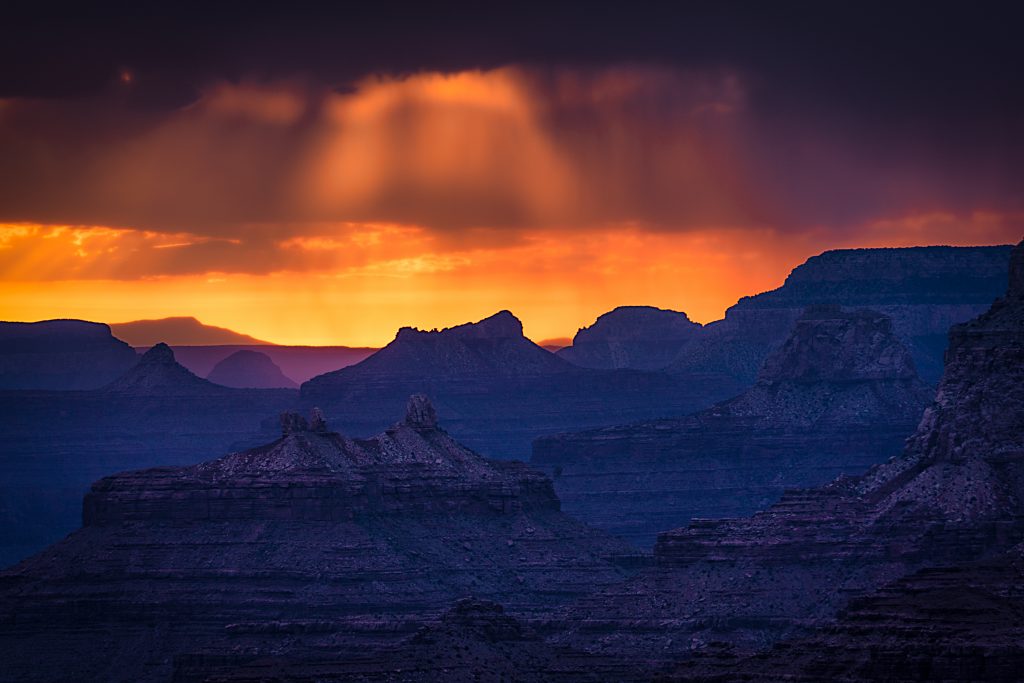
Fast forward to present-day and no longer am I heading home when the storms ramp into high gear; in fact, just the opposite. In a sense, I’ve become an amateur storm chaser. For the past six years, my friend Gary Hart and I have been leading workshop groups along both the North and South rims of the Grand Canyon National Park. Monsoon season in Arizona typically runs from Mid-June through Mid-September and we position our workshops during August.
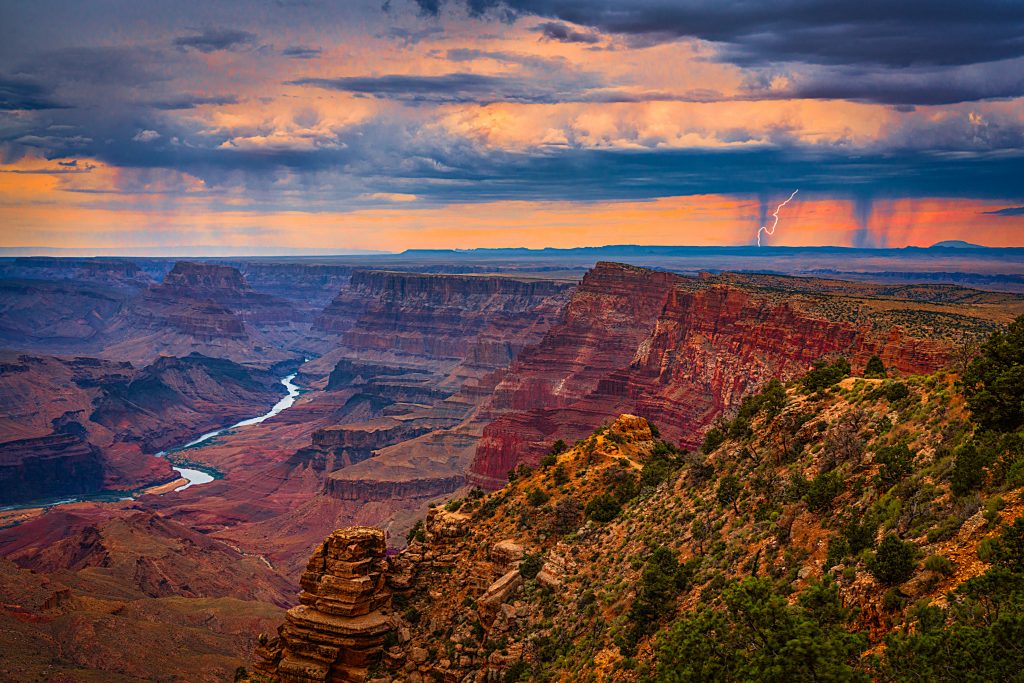
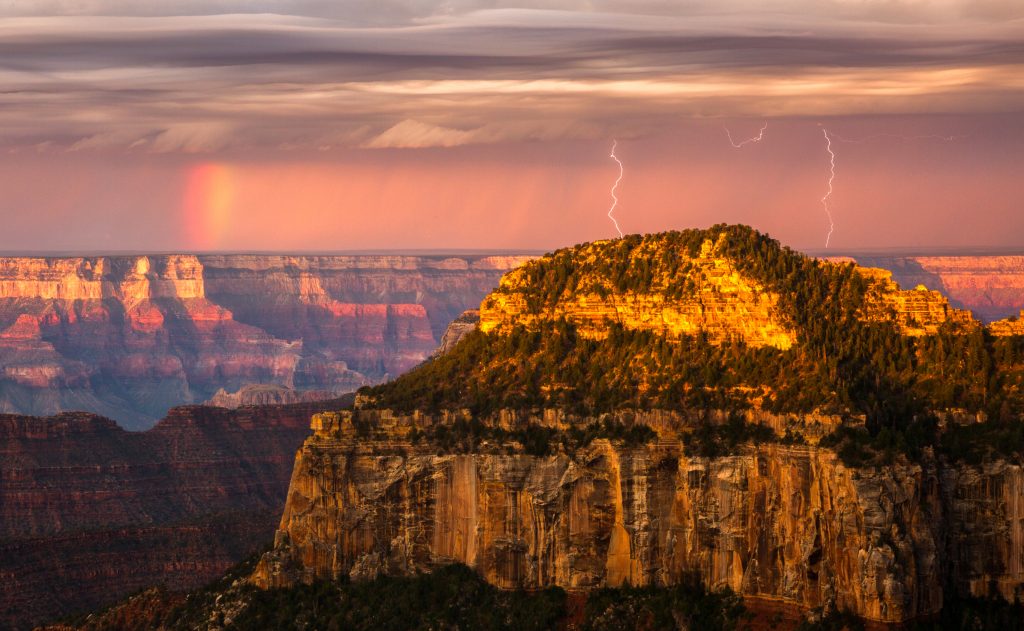
One of our clear concerns when going after daytime lightning is the camera – more specifically, the shutter-lag of the camera. We both take along out Sony a7RIII and now Sony a7RIV. They are by far the two best cameras one can use because of their amazingly fast shutter lag times.
The Sony a7RIII’s shutter lag is a scant .020 second when combined with The Lightning Trigger IV and its patented ability to keep the camera in active mode and prefocused (turn AF off).
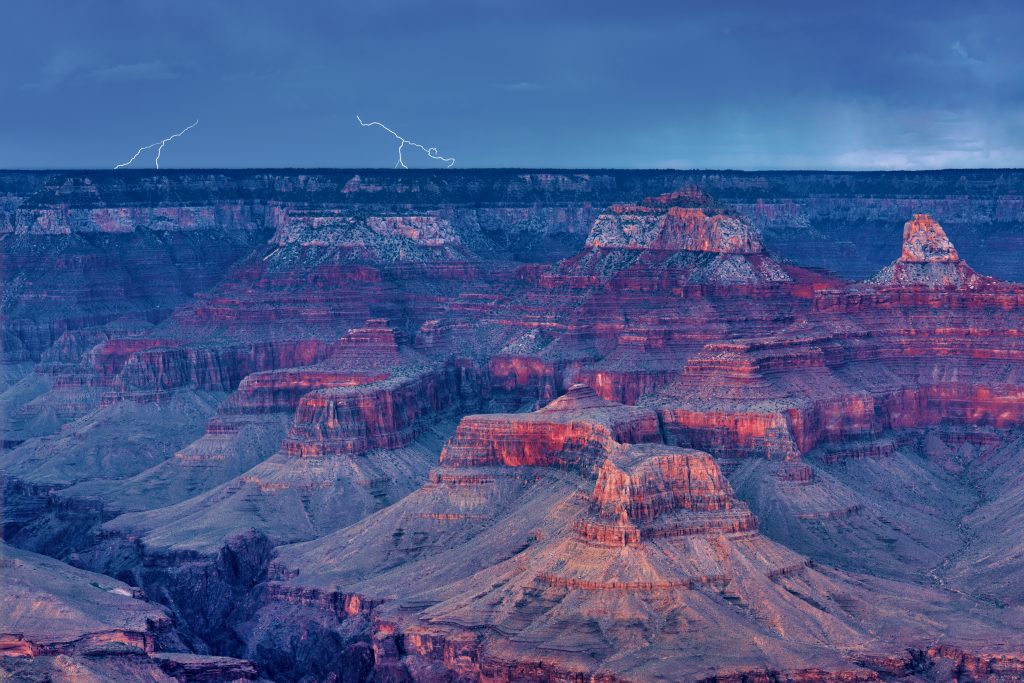
According to The Lighting Trigger inventor and owner of Stepping Stone Productions, Rich Davis, anything at or below .060 is good – the lower you go, the more ability the camera has to capture cloud-to-ground bolts.
Another must when it comes to equipment for successful lightning photography is a solid tripod and ball head. I use only Really Right Stuff equipment. Dependability is a must and RRS’s gear is made to handle the elements, from wind to rain and everything in-between.
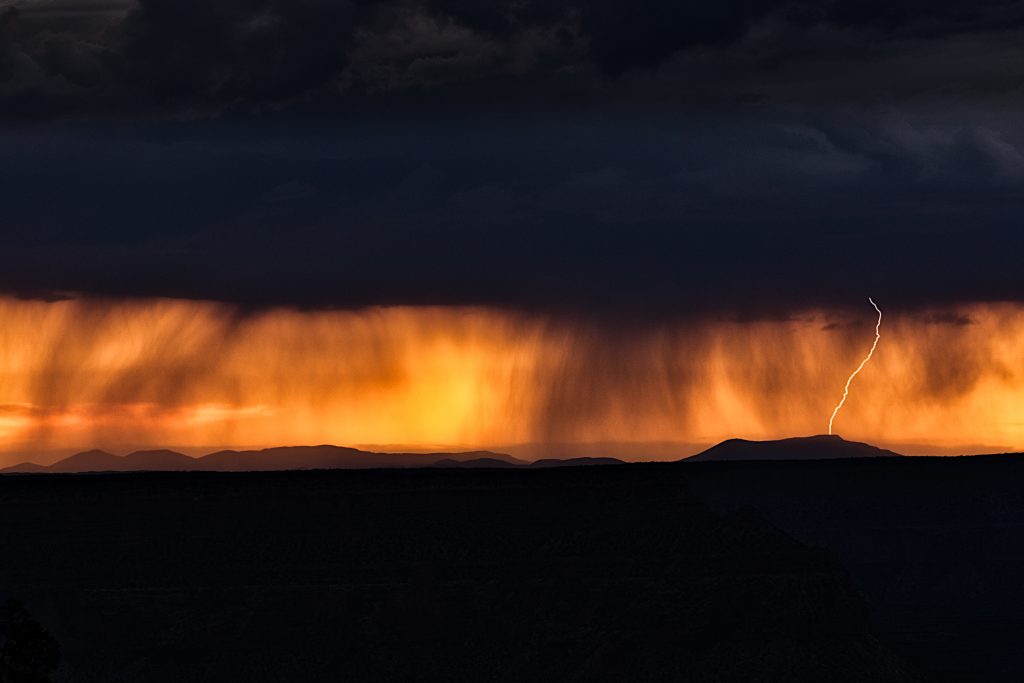
Like anything in photography, if you want to be good, you must prepare and practice. Additionally you need a good camera and a sense of when and where the storms would appear (we used an app on our iPhones to allow us to track ground strikes and developing cells). Our main piece of equipment that would allow for daytime capture of these elusive bolts is a piece of equipment known as a Stepping Stone Products Lightning Trigger.
The unit attaches to the hot shoe of the camera and is linked via a modified remote cable. I am by no means an engineer so I can’t explain how the unit works other than to say that it detects a down-bolt and trips the shutter just prior to our eyes seeing the flash on the return-bolt. Of course all of this happens in milliseconds and our Sony’s are there to capture the moment in milliseconds with their amazingly fast shutter lags. It is not perfect, and it does not capture every bolt, but my success rate was roughly 70% with ground strikes and somewhat less with cloud-to-cloud or intra-cloud strikes. Simply put, this is what you need if you are serious about capturing daytime lightning.

On a recent trip, I have returned with over 85 frames of daytime lightning!
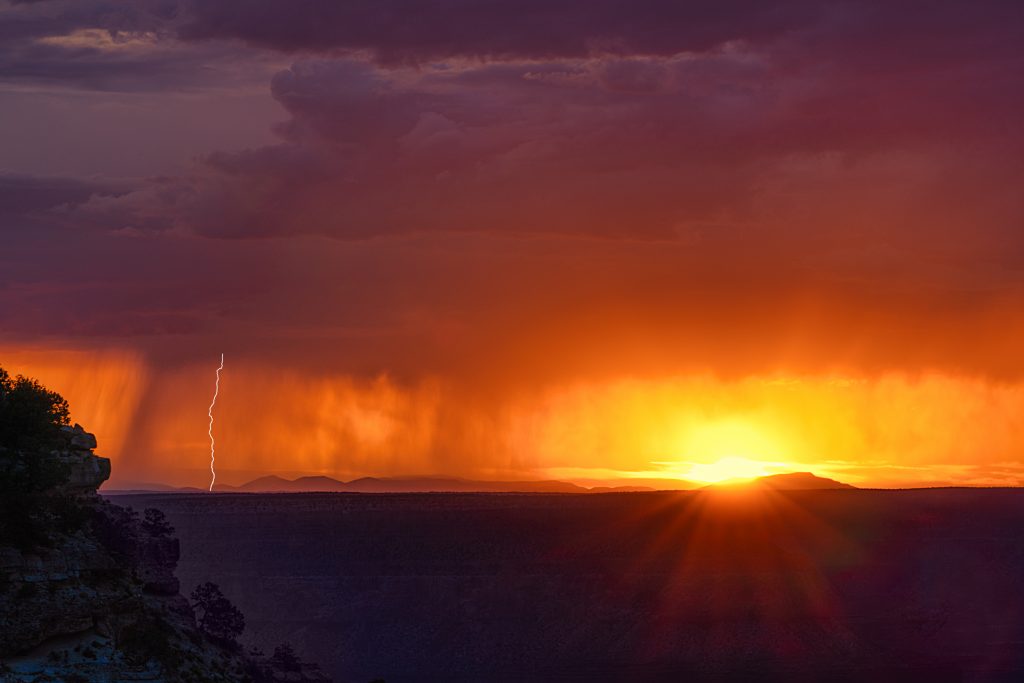

For those of you reading this and thinking: “These guys are absolutely nuts,” you would be somewhat correct. Lightning can jump on average 10 miles between strikes. We knew if we were close enough to hear thunder, we were close enough to be hit. The Grand Canyon, from rim-to-rim, can vary in distance from 4 to 18 miles. Yes, we were putting ourselves in harm’s way; yet, there was really no other way to compose these scenes without being out in the middle of it all. We also knew all the stats: roughly 87 people are killed each year by lightning strikes (10% of all those hit). The other 90% have various types of injuries that can last the remainder of their lives.

If these stats aren’t enough to put you off and you’re interested in capturing daytime lightning, please realize that you could be placing yourself in some type of danger to get images of merit – at least at the Grand Canyon. In other locations, I could see staying far enough away – it’s your call. If you can get past that and still wish to try your hand at this exhilarating type of photography, then here are some of my recommendations:
Purchase a solid tripod, ball head, and L-clamp from Really Right Stuff.
Setting up the Lightning Trigger
Purchase a Stepping Stone Products Lightning Trigger IV – Approximately $450.00 (including modified remote cord). As of this writing, there are other companies that sell triggers but I’ve yet to hear of one that will do a better job. This is the one that has proven to work!
Camera shutter-lag rated .60 milliseconds or slower. To check on your camera’s shutter lag-time, please see Imaging Resource and click on the Performance Tab of your camera.
Camera settings: Manual mode (best at reducing shutter lag) (recommended 1/4 – 1/15th second shutter, manual focus on lens (again, reduces shutter lag), f/16 or 22, a polarizer, Neutral Density, or VariND duo filter to cut down the ambient light.
50-100 ISO
Single-frame drive mode
Noise Reduction modes (can remain on but will cut time between frames – this is a post-processing function and will not influence shutter-lag time).
Test Lightning Trigger upon each setup with either a portable flash unit or a television remote. We recently discovered that Apple TV’s tiny remote can trigger the unit!
Lens Hood – will help prevent rain from striking front of lens if it begins to sprinkle and there is no wind.
Plastic bags to protect camera and trigger from heavy rain.
Lint free cloths: for wiping rain drops off lens. Rain drops are nearly impossible to clone-out in post processing because they blur.
Light rain gear: where there is lightning there is a good chance there will also be rain.
Proper Sequencing of Lightning Trigger:
Turn off Lightning Trigger and camera.
Attach Lightning Trigger to hot shoe.
Connect modified remote cable to Lightning Trigger.
Attach other end of modified remote cable to camera’s remote terminal.
Turn on Lightning Trigger.
Turn on Camera.
Test by firing small flash or television remote pointing at Lightning Trigger’s sensor.
For more information regarding thunderstorms and lightning facts, please check National weather Service Lightning Facts.
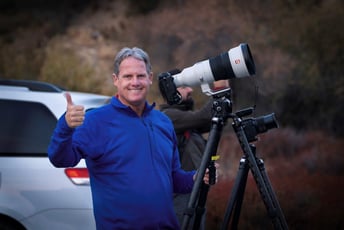
Don has spent the past 43 years working as a professional sports and landscape photographer. His client list included Sports Illustrated, NFL, MLB, NBA, and he was co-team photographer for 28 years for the NHL’s San Jose Sharks.
He has now turned 100% of his attention to his landscape work and teaching workshops both domestically and Internationally. He is a Sony Artisan of Imagery Professional and Singh-Ray Ambassador. Don currently travels 75% of the year and is represented exclusively by Getty Images.
“The constant grind of travel puts a stress on the body that must be dealt with daily while staying creative and educating others.
Really Right Stuff tripods, ball heads and L-Brackets help me meet the day-to-day demands of landscape photography. Long hours and little sleep take a toll and one does not need extra stress of equipment failing at the critical moment. I love RRS not only for their amazing gear but also for their customer support. They are an integral part of what makes me successful!”
